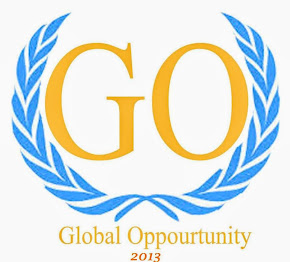RFP Summary
RFP Number: SOL1093111Open Date: June 4, 2013
***CONTEST EXTENSION****
Proposals submitted with an electronic version of the prototype are now due November 15th at 10:00AM PT.
If the proposal includes a hardcopy prototype that will be mailed to the foundation, it must be postmarked by October 31, 2013.
The Bill & Melinda Gates Foundation is seeking help to redesign the look and feel of child health records.
A redesigned health record will not only increase accuracy but also make medical records easier to interpret and use.
Context
Child health records serve at least five functions in a health system:
- A unique identifier that is intimately connected to the child
- A source of critical information for health workers about the child’s health and vaccination status, and what the child needs at each point of contact with the health system
- A source of critical information for families, such as date of next visit for vaccination
- A source of critical information for household surveys, which many countries and policymakers rely on to validate coverage levels obtained from administrative data systems
- An educational tool for families to learn more about health interventions
However, child health records may fail to
serve these functions for a variety of reasons. Many families never
receive health records for their children, or, if they do receive them,
they can be easily lost. In many cases, records are not accurately
filled out because they are designed in a confusing way.
Accurate and accessible records are needed
to maintain accurate health histories for children, identify those who
need to be immunized, and those who have missed immunizations or are off
schedule. When the record is unclear, inaccessible or unused, it’s
harder to reach children with life-saving vaccines.
The foundation will recognize the top entries - selected by a panel including Melinda Gates (co-chair, Bill & Melinda Gates Foundation), Robert Fabricant (Vice President, Frog Design), Dr. Margaret Chan (Director General, World Health Organization), Tony Lake (Executive Director, UNICEF), and Dr. Walt Orenstein (Professor of Medicine, Emory University) — with awards of up to $50,000. Top designs may be piloted in as many as ten countries by 2018. We are looking for innovative ideas that will:
- improve the child health record;
- strengthen information systems; and
- empower health workers and families to protect children from vaccine-preventable diseases and ultimately save lives.
The Contest
The Records for Life contest will run
through October 31, 2013 for hard copy submissions and electronic
proposals can now be submitted through November 15th at 10:00AM PT. Winners will be announced in early 2014.
The contest is open to all individuals
from all sectors (for-profits, Non-Governmental Organizations,
governments, universities, etc.) and all levels of expertise (students,
professors, frontline workers, CEOs, etc.). Submissions can come from
individuals or teams of individuals.
Submissions must include a cover letter, a
prototype of the redesigned child health record and an accompanying
narrative that articulates how the prototype design would help ensure
that the child health record fulfills the five functions as described
above.
The submissions will be evaluated by a
judging panel of design and immunization experts, as well as parents and
health workers in a series of focus groups. The evaluation will be
based on the following characteristics:
- Clarity of the design
- Adaptability of the card
- Perceived value to caregivers
- Perceived value to health workers
- Durability of the card
There will also be recognition in three
additional categories that seek to address some specific design
challenges with current child health records:
- Ease of adding new information to the card
- Digital transition: Visualizing data
- Digital transition: Retroactive data entry
Read the detailed contest rules and guidelines here .
Submit your idea here.Frequently Asked Questions
Question: Can two entries can be submitted from the same organization?
Answer: Yes, we will accept multiple entries from the same organization if they are submitted by different lead people (i.e. designer, investigator, etc.).
Question: Is this contest solving for a specific geography or targeting a specific culture?
Answer: Because the problems in the design of the child health record are global in scope, this contest is not restricted to focus on a particular country or set of countries. You have the option of noting a specific country you would like to focus on and articulating that in the narrative, and you can submit a record in any language as long as you submit the record in English as well (as noted in the minimum requirements). We are most interested in ideas and innovations that can be applied broadly- though understand that in many cases local adaptations are necessary.
We can direct you to this immunization card repository that has cards from multiple countries. We recommend looking through this to get ideas about what current cards look like and then you can either chose to re-design one of these cards, please note which you chose, or you can begin from scratch and design a card with a completely new and innovative approach. Please follow-up if you need additional clarification on this.
Question: What can we assume about the existing infrastructure in places where these child health records will be used?
Answer: We will be most interested in broadly applicable solutions that can be used even in very remote communities with minimal access to electricity, roads and other forms of infrastructure.
Question: Can the design solution be digital?
Answer: The design solution can be a combination (digital and paper-based) or paper-based. If you are pursuing a combination solution, it will be important to consider the extent to which you can apply the solution broadly. Because the problems in the design of the child health record are global in scope, this contest is not restricted to focus on a particular country or set of countries and we want to make sure that countries with little infrastructure can implement the solution. Related to that, swapping one style of paper for another has next to no cost for the country- a combination solution may bring additional cost. While we do not want cost to be a restricting factor that impedes innovation during this contest, it’s important to note that many countries currently spend ~$0.10/child to print the health records, and solutions that cost many orders of magnitude greater than that will be hard to implement broadly (per earlier point).
Question: Are there any size restrictions to the record?
Answer: In terms of size restrictions, there are none, but to take either extreme- a record that’s way too small might struggle with the Clarity criteria, and a record that’s way too big might struggle in terms of Durability (e.g. difficult to store) and Value to health workers and Value to caregivers (e.g. unwieldy to handle, read and understand).
Question: Would an actual printed out copy of the design be worth sending as well as an electronic version?
Answer: If you feel that an electronic version does not adequately convey your submission, then you should send a printed copy. But we do not require a printed copy for submission. If you would like to submit a physical component, please send this to 1432 Elliott Avenue West, Seattle, WA 98119 and mark it as Attention: Records for Life contest.
Answer: Yes, we will accept multiple entries from the same organization if they are submitted by different lead people (i.e. designer, investigator, etc.).
Question: Is this contest solving for a specific geography or targeting a specific culture?
Answer: Because the problems in the design of the child health record are global in scope, this contest is not restricted to focus on a particular country or set of countries. You have the option of noting a specific country you would like to focus on and articulating that in the narrative, and you can submit a record in any language as long as you submit the record in English as well (as noted in the minimum requirements). We are most interested in ideas and innovations that can be applied broadly- though understand that in many cases local adaptations are necessary.
We can direct you to this immunization card repository that has cards from multiple countries. We recommend looking through this to get ideas about what current cards look like and then you can either chose to re-design one of these cards, please note which you chose, or you can begin from scratch and design a card with a completely new and innovative approach. Please follow-up if you need additional clarification on this.
Question: What can we assume about the existing infrastructure in places where these child health records will be used?
Answer: We will be most interested in broadly applicable solutions that can be used even in very remote communities with minimal access to electricity, roads and other forms of infrastructure.
Question: Can the design solution be digital?
Answer: The design solution can be a combination (digital and paper-based) or paper-based. If you are pursuing a combination solution, it will be important to consider the extent to which you can apply the solution broadly. Because the problems in the design of the child health record are global in scope, this contest is not restricted to focus on a particular country or set of countries and we want to make sure that countries with little infrastructure can implement the solution. Related to that, swapping one style of paper for another has next to no cost for the country- a combination solution may bring additional cost. While we do not want cost to be a restricting factor that impedes innovation during this contest, it’s important to note that many countries currently spend ~$0.10/child to print the health records, and solutions that cost many orders of magnitude greater than that will be hard to implement broadly (per earlier point).
Question: Are there any size restrictions to the record?
Answer: In terms of size restrictions, there are none, but to take either extreme- a record that’s way too small might struggle with the Clarity criteria, and a record that’s way too big might struggle in terms of Durability (e.g. difficult to store) and Value to health workers and Value to caregivers (e.g. unwieldy to handle, read and understand).
Question: Would an actual printed out copy of the design be worth sending as well as an electronic version?
Answer: If you feel that an electronic version does not adequately convey your submission, then you should send a printed copy. But we do not require a printed copy for submission. If you would like to submit a physical component, please send this to 1432 Elliott Avenue West, Seattle, WA 98119 and mark it as Attention: Records for Life contest.









0 comments:
Post a Comment